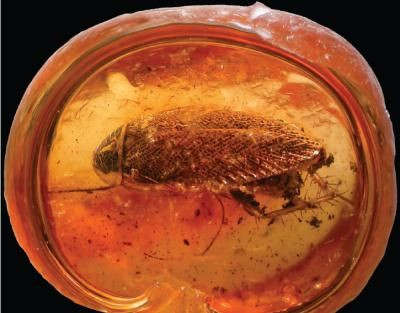49-Million-Year-Old Cockroach Fossil Reveals A New World Origin For The Old World Ectobius Genus

A cockroach believed to have its roots firmly in the Old World may have first shown up in the New World. A 49-million-year old cockroach fossil discovered in Colorado predates the oldest known fossil of an Ectobius cockroach by five million years.
The oldest known fossil of an Ectobius cockroach was found in a 44-million-year-old Baltic Amber. The discovery of four species of Ectobius cockroach in the Green River Formation, located in Colorado, which is 49-million-years-old, changes the fossil record of the genus and predates the Baltic amber fossil by five million years. The research was published in the Annals of the Entomological Society of America.
According to the Entomological Society of America, cockroaches belonging to the Ectobius genus were believed to have an exclusively Old World history with an extensive fossil record in Europe and Africa. Ectobius cockroaches are the most common type of cockroach in the Old World but are rarely seen in the Americas, four species of Ectobius cockroach were discovered in North America around 65 years ago, notes Conrad Labanderia, from the Smithsonian National Museum of Natural History.
“It was always assumed that these four newcomers were the first Ectobius species to have ever lived in North America. But the discovery in Colorado proves that their relatives were here nearly 50 million years ago,” said Labanderia in a statement.
The four species of cockroach discovered in Colorado soon became extinct in North America but continued to thrive in the Old World. It is believed that Ectobius disappeared from North America due to a drop in temperature, soon finding a home in Europe and Africa. It took 49 million years for an Ectobius cockroach, adapted to the cold, to return to North America. The researchers describe the Ectobius’ existence in North America as one that is reminiscent of horses, which were first found in North America but soon became extinct and later reintroduced by Spanish explorers.
© Copyright IBTimes 2024. All rights reserved.






















